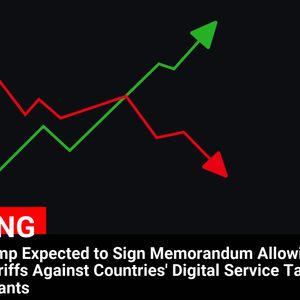In a surprising turn of events in the digital finance landscape, Kyrgyzstan has announced a significant shift in its approach to digital currencies. Instead of joining the global trend of Central Bank Digital Currencies (CBDCs), this Central Asian nation is charting a different course. Let’s dive into why Kyrgyzstan is rejecting the CBDC path and enthusiastically embracing a gold-backed stablecoin. Why is Kyrgyzstan Saying ‘No’ to CBDC? The global conversation around digital currencies has been heavily focused on CBDCs, with many countries exploring their potential benefits. However, Kyrgyzstan has decided to buck this trend. While the exact reasons haven’t been explicitly stated, we can infer some potential factors behind this decision: Concerns about Centralized Control: CBDCs, by their very nature, are centrally controlled by the central bank. Kyrgyzstan might be wary of granting excessive control over the financial system to a single entity. This could stem from concerns about data privacy, potential for censorship, or a preference for decentralized financial models. Existing Financial Infrastructure: Kyrgyzstan’s current financial infrastructure and the needs of its population might not align perfectly with the solutions CBDCs offer. Perhaps the perceived benefits of a CBDC didn’t outweigh the costs and complexities of implementation in their specific context. Focus on Alternative Solutions: By choosing a gold-backed stablecoin, Kyrgyzstan signals a preference for alternative digital currency models that might better suit its economic priorities and values. This move suggests a proactive approach to digital finance, just not through the CBDC route. The Allure of Gold-Backed Stablecoins: A Shining Alternative [img]gold_stablecoin.jpg[/img] Gold bars, representing the backing of the stablecoin. So, if not CBDC, then what? Kyrgyzstan’s answer is a gold-backed stablecoin . This is a fascinating pivot and here’s why gold-backed stablecoins are gaining traction and might be appealing to Kyrgyzstan: Stability and Trust: Gold has historically been considered a safe haven asset, a store of value that withstands economic turbulence. Backing a stablecoin with gold can instill greater trust and stability compared to fiat-backed or algorithmic stablecoins, especially in economies seeking to hedge against inflation or currency devaluation. Tangible Asset Backing: Unlike many digital assets that are purely digital, a gold-backed stablecoin has a tangible asset backing it – physical gold reserves. This tangible backing can provide a sense of security and intrinsic value, which can be particularly attractive in markets where trust in purely digital systems is still developing. Potential for International Trade: Gold is recognized and valued globally. A gold-backed stablecoin could facilitate international trade and remittances for Kyrgyzstan, potentially simplifying cross-border transactions and reducing reliance on traditional banking systems. Attracting Investment: The unique proposition of a gold-backed stablecoin could attract investors interested in both digital assets and the stability of gold. This could potentially bring capital into Kyrgyzstan and boost its financial sector. Digital Currency Evolution: Is Kyrgyzstan Ahead of the Curve? Kyrgyzstan’s decision prompts a crucial question: Is focusing on a gold-backed stablecoin a more pragmatic and innovative approach than pursuing a CBDC, at least for certain nations? While CBDCs are often touted as the future of money, they come with their own set of challenges, including implementation complexities, privacy concerns, and the risk of stifling innovation in the private crypto space. Let’s compare CBDCs and gold-backed stablecoins in a table: Feature CBDC (Central Bank Digital Currency) Gold-Backed Stablecoin Issuer Central Bank Potentially private entities or government-backed initiatives Backing Fiat currency, government trust Physical gold reserves Control Highly centralized Potentially more decentralized depending on implementation Volatility Aimed to be stable against fiat currency Potentially linked to gold price fluctuations but generally stable relative to other cryptocurrencies Privacy Potential privacy concerns due to centralized control Privacy aspects depend on the specific stablecoin design Innovation Potentially limited to central bank-driven innovation Opens doors for private sector innovation within a gold-backed framework Navigating the Challenges and Embracing the Gold Standard in the Digital Age Developing and implementing a successful gold-backed stablecoin is not without its hurdles. Kyrgyzstan will need to address several key challenges: Ensuring Transparency and Auditability: Robust mechanisms must be in place to guarantee that the stablecoin is truly backed by sufficient gold reserves. Regular audits and transparent reporting are crucial to maintain public trust. Regulatory Framework: A clear and supportive regulatory framework is needed to govern the issuance, circulation, and redemption of the gold-backed stablecoin. This framework should address anti-money laundering (AML) and counter-terrorism financing (CTF) concerns while fostering innovation. Technological Infrastructure: A secure and efficient technological infrastructure is required to manage the digital currency, ensure smooth transactions, and protect against cyber threats. Choosing the right blockchain platform or technology will be vital. Public Adoption and Education: Widespread adoption will depend on public awareness and understanding of the gold-backed stablecoin. Education initiatives will be necessary to familiarize citizens with its benefits and usage. Actionable Insights: What Can We Learn from Kyrgyzstan’s Strategic Choice? Kyrgyzstan’s decision offers valuable insights for other nations considering their digital currency strategies: One Size Doesn’t Fit All: The optimal digital currency solution is not universal. Countries should carefully assess their unique economic contexts, financial infrastructure, and societal needs before choosing between CBDCs, stablecoins, or other approaches. Embrace Innovation and Alternatives: Don’t solely focus on CBDCs. Explore alternative digital currency models like asset-backed stablecoins that might offer distinct advantages in specific situations. Prioritize Stability and Trust: In volatile economic climates, stability and trust are paramount. Gold-backed stablecoins can provide a compelling value proposition by combining the stability of gold with the efficiency of digital currencies. Foster Public-Private Collaboration: Successful implementation of digital currencies, whether CBDCs or stablecoins, often requires collaboration between government entities and the private sector to leverage expertise and drive innovation. Conclusion: A Powerful Statement in the Digital Currency Revolution Kyrgyzstan’s rejection of CBDC plans in favor of a gold-backed stablecoin is a powerful and noteworthy move in the evolving world of digital currencies. It signals a departure from the prevailing CBDC narrative and highlights the potential of alternative digital asset strategies. By focusing on a gold-backed stablecoin, Kyrgyzstan aims to leverage the enduring appeal of gold to create a stable, trustworthy, and potentially globally relevant digital currency. This strategic decision could position Kyrgyzstan as a pioneer in a new wave of digital finance, one that prioritizes asset-backed stability and offers a compelling alternative to the centralized control often associated with CBDCs. The world will be watching to see how this bold experiment unfolds and what lessons it holds for the future of money. To learn more about the latest explore our article on key developments shaping stablecoin adoption and innovation.
















